
- Introduction
- Is Leather Biodegradable Material?
- What Factors Affect the Biodegradability of Leather?
- Are There Any Environmental Benefits to Using Biodegradable Leather Alternatives?
- Biodegradability: Synthetic Leather vs. Natural Leather
- Understanding Different Types of Biodegradable Leather and Their Environmental Impact
- How Much Time Taken to Degrade Leather
- Can Leather Products be Composted in a Home Composting System?
- Are There Any Eco-Friendly Disposal Methods for Leather Products?
- Bottom Line
Introduction
You’re out shopping for a new handbag or a pair of shoes and come across some beautiful leather items. Naturally, many of us are attracted to leather’s allure and durability. However, have you ever stopped to think about its environmental impact? Specifically, have you ever wondered, “Is leather biodegradable?”
We often hear buzzwords like “sustainable” and “eco-friendly.” They pop up when we aim to shop responsibly. However, understanding these terms, especially in relation to specific materials, isn’t always straightforward. As we transition to our primary focus, it’s time to delve into leather. What is it made of? Does it biodegrade after use?
This article will guide you through leather’s origins. We’ll trace its path from the farm, right to the items in your wardrobe. We’ll also investigate what happens to it in our environment after its use.
Are you a conscious consumer? Or perhaps just someone looking for answers? Either way, this piece aims to shed light on a pressing topic. So, let’s embark on this exploration of leather and understand its effects on our planet.
Is Leather Biodegradable Material?

Yes, leather is a biodegradable material. It is made from animal hides, which are a natural product. The biodegradability of leather isn’t straightforward. It varies based on several factors. One key factor is the tanning process. Traditional tanning often involves heavy metals and chemicals. These can delay leather’s biodegradation. However, there are newer tanning methods now. These methods are more sustainable and result in leather that breaks down more easily.
The conditions in which leather is disposed of also affect its biodegradability. Leather buried in a landfill takes a long time to break down. On the other hand, leather in a backyard compost bin biodegrades faster.
What Factors Affect the Biodegradability of Leather?
Here, we’ll explore the variables that can affect the biodegradability of leather.
1. Type of Tanning Process Used

Vegetable Tanning: Vegetable tanning comes from natural plant sources. This method makes leather that breaks down more easily than other methods. Because of its organic nature, bacteria find it simpler to break down.
Chrome Tanning: This method uses chemicals, primarily chromium, to tan the leather. Unfortunately, chrome-tanned leather decomposes at a slower rate due to these chemicals.
2. Presence of Preservatives and Finishings

Modern leather products often receive a range of treatments to enhance their appearance and longevity. These can include:
Waterproofing Agents: They protect leather from moisture damage. However, they can also slow down its biodegradation process.
Dyes and Paints: Artificial colors and finishes may contain chemicals that delay the natural decomposition of leather.
3. Environmental Conditions

Our surroundings affect our well-being. Similarly, the environment has a deep impact on leather’s decomposition.
Moisture Levels: Leather decomposes faster in moist environments. This is because moisture boosts bacterial activity. On the flip side, arid conditions can slow down the decomposition process.
Temperature: Warmer climates speed up biodegradation. The heightened temperature accelerates microbial activity, leading to faster leather decomposition.
Presence of Microorganisms: An environment with lots of bacteria and fungi speeds up leather’s breakdown. Sterile conditions slow this process.
4. Thickness and Quality of Leather
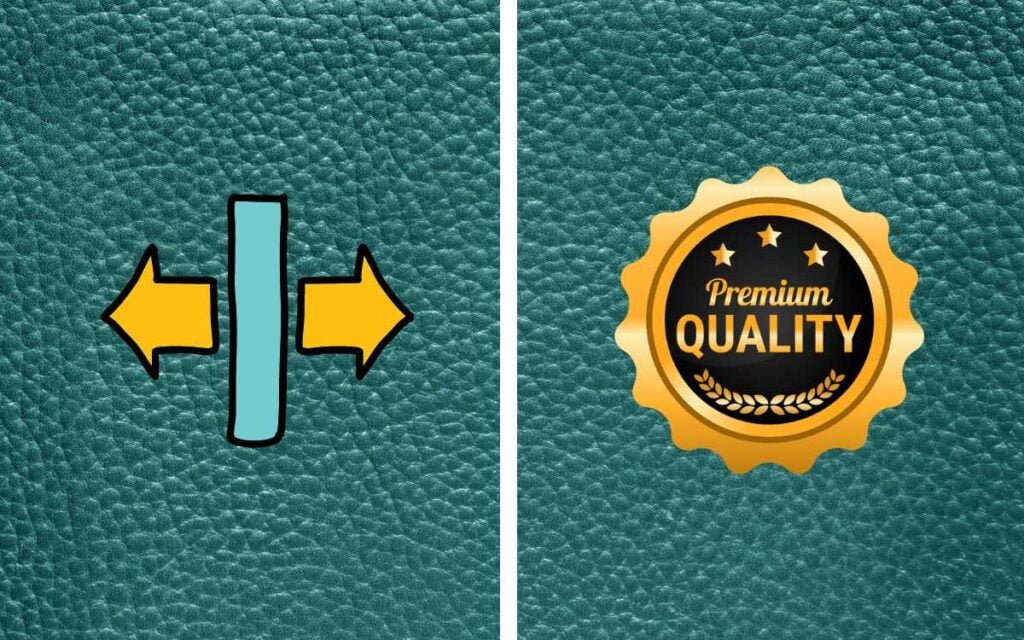
Lastly, not all leather is created equal.
Thickness: Thicker leather pieces take a longer time to degrade fully compared to their thinner counterparts.
Quality: High-quality, full-grain leather has a dense fiber structure. This makes it resist decomposition longer than lower-quality types.
Are There Any Environmental Benefits to Using Biodegradable Leather Alternatives?

Yes, there are a number of environmental benefits to using biodegradable leather alternatives. Some of the key benefits include:
Reduced water and land use: Leather production requires a significant amount of water and land. For example, it takes about 2,000 gallons of water to produce a single cowhide. Biodegradable leather alternatives, on the other hand, often require less water and land to produce.
Reduced greenhouse gas emissions: Leather production also contributes to greenhouse gas emissions. This is due to the methane gas that is released from cow manure and the energy that is required to process leather. Biodegradable leather alternatives often have a lower carbon footprint than leather.
Reduced chemical use: Leather production uses a number of chemicals, including heavy metals and dyes. These chemicals can pollute the environment and harm human health. Biodegradable leather alternatives often use fewer chemicals. These chemicals are usually more sustainable in the production process.
Reduced waste: Leather production generates a lot of waste, both in the form of solid waste and liquid wastewater. Biodegradable leather alternatives often produce less waste, or more biodegradable waste, than leather.
Biodegradability: Synthetic Leather vs. Natural Leather

When choosing between synthetic and natural leather, it’s natural to wonder about their environmental impacts. One critical aspect to consider is biodegradability. So, how do these two types of leather stack up against each other?
1. Decomposition Time
Natural Leather: Natural leather comes from animal hides. It can take between 25 to 50 years to decompose in the environment. This time varies based on factors such as the tanning process and other treatments.
Synthetic Leather: Synthetic leather is usually made from petroleum-based products. It can take hundreds of years to degrade. This often makes it last much longer than natural leather.
2. Chemical Usage
Natural Leather: Natural leather production, especially chrome tanning, introduces harmful chemicals into the environment. However, vegetable-tanned leather offers a more environmentally friendly option.
Synthetic Leather: Production of synthetic leather often uses chemicals such as PVC or polyurethane. While these give the material its desired properties, they’re not kind to the environment and slow down decomposition.
3. Environmental Impact Post-Usage
Natural Leather: Natural leather does decompose eventually. However, it can raise environmental concerns. This is especially true if it’s treated with non-biodegradable substances.
Synthetic Leather: Synthetic leather has a long decomposition time due to its chemical makeup. As a result, it can remain in landfills for centuries. This presents long-term environmental issues.
4. Innovations and Alternatives
Natural Leather: A trend is growing in sustainable tanning methods for natural leather. These methods aim to better the leather’s environmental footprint.
Synthetic Leather: Innovative alternatives, like bio-based synthetic leather, are emerging. These options aim to be more eco-friendly and biodegradable than traditional synthetic leather.
Understanding Different Types of Biodegradable Leather and Their Environmental Impact
The search for sustainable materials is ongoing. The fashion and design industries have introduced various biodegradable leather alternatives. These innovations offer a new aesthetic appeal. Additionally, they have a smaller environmental footprint.
Let’s delve into these options.
1. Pineapple Leather

Source: Created from the fibers of pineapple leaves.
Environmental Impact: Utilizes a waste product from the pineapple industry, reducing overall waste. Less water and chemicals are required compared to traditional leather.
Advantages: Lightweight, durable, and has a texture akin to traditional leather.
2. Vegan Cork Leather
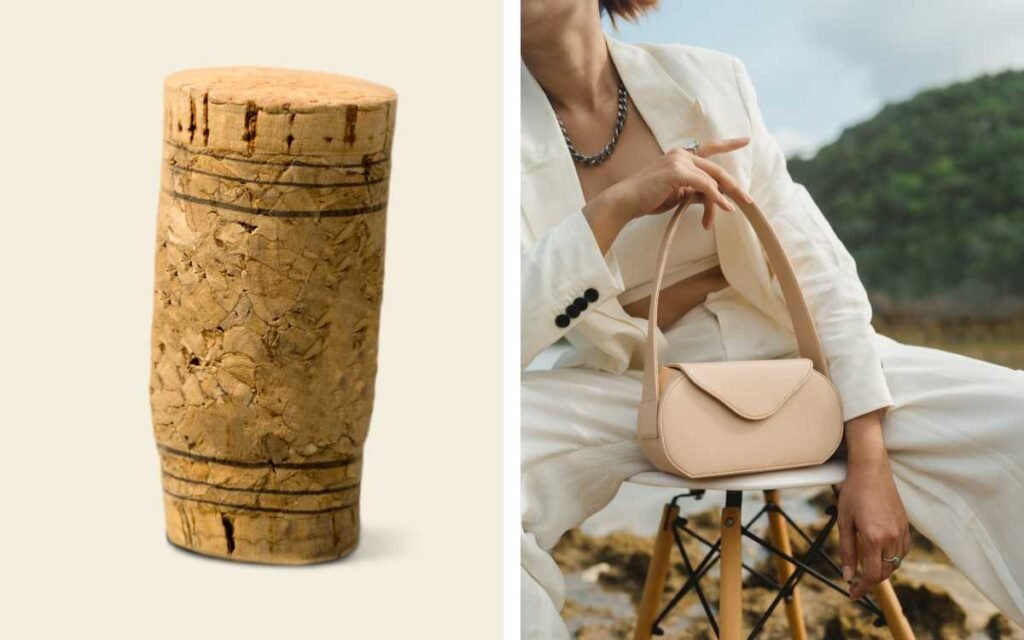
Source: Derived from the bark of cork oak trees.
Environmental Impact: Harvesting doesn’t harm the tree and allows it to absorb more CO2. Biodegradable and uses less water during production.
Advantages: Naturally water-resistant and has a unique, earthy appearance.
3. Mushroom Leather (Mylo)
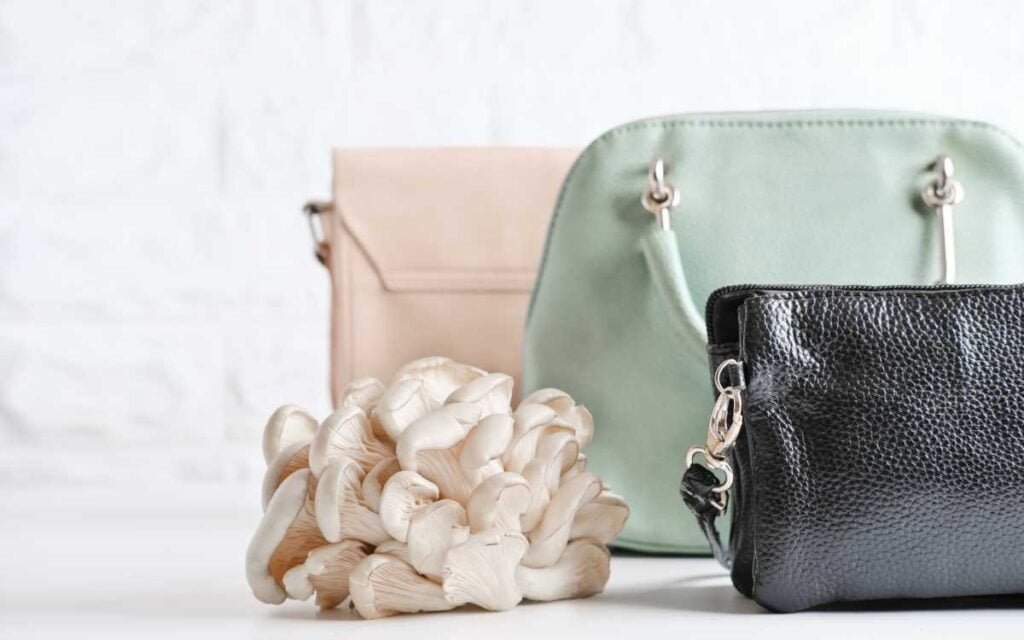
Source: Made from the mycelium of fungi.
Environmental Impact: Fully compostable and produced using less land and water. Doesn’t rely on petroleum or animal resources.
Advantages: Soft, breathable, and resembles the feel of genuine leather.
4. Leaf Leather

Source: Manufactured from various plant leaves, like teak.
Environmental Impact: Uses waste leaves, ensuring no extra strain on resources. No harmful chemicals are involved in the production.
Advantages: Distinctive texture and appearance that celebrates nature.
5. Grain-based Leather

Source: Derived from grains like wheat and corn.
Environmental Impact: Consumes fewer resources than animal leather. Biodegradable and doesn’t release harmful residues.
Advantages: Flexible, smooth, and suitable for various applications.
6. Recycled Bottles
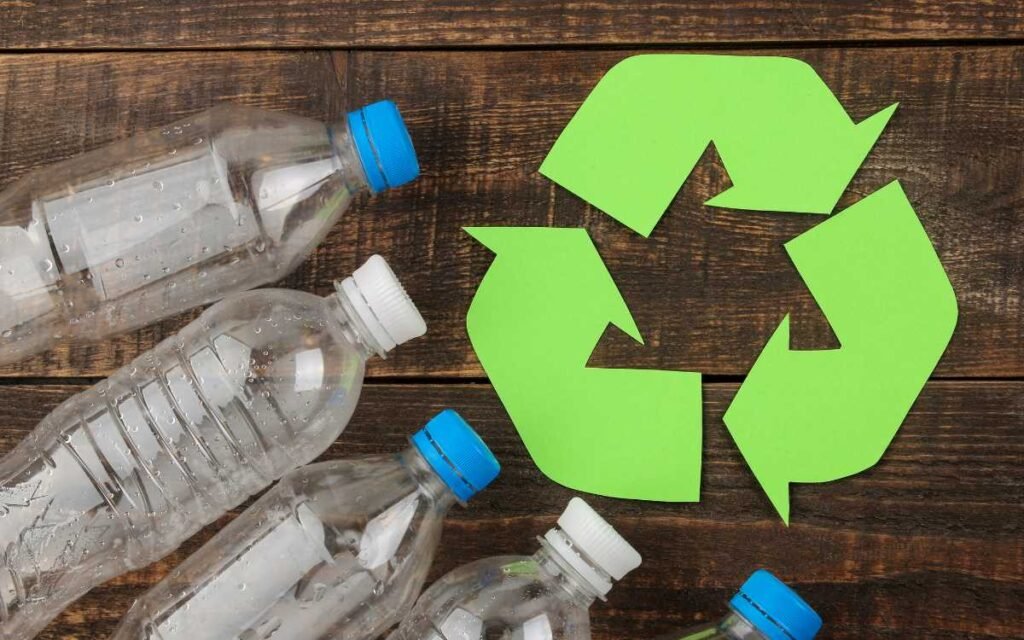
Source: Crafted from the fibers of recycled plastic bottles.
Environmental Impact: Reduces plastic waste and diverts bottles from landfills. Saves energy compared to producing new plastic products.
Advantages: Durable, versatile, and an innovative solution to plastic pollution.
7. Cactus Leather (Desserto)
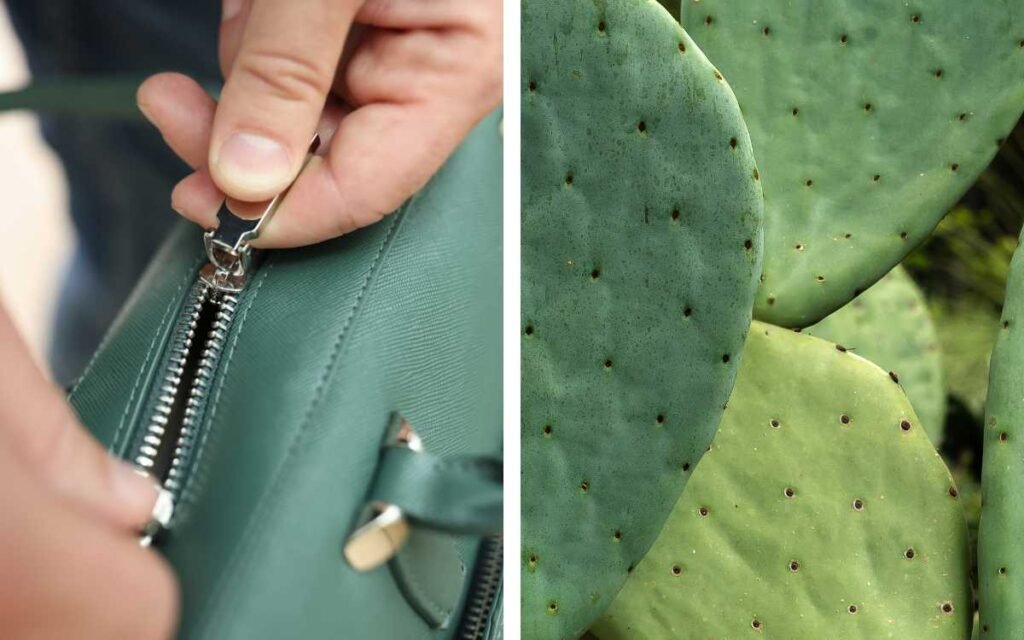
Source: Made from cactus plant fibers.
Environmental Impact: Cactus grows abundantly with minimal water needs. Offers a sustainable alternative without the need for toxic chemicals.
Advantages: Soft touch and resilience make it comparable to animal leather.
How Much Time Taken to Degrade Leather
Leather, a cherished material worldwide, doesn’t last forever in our environment. When it comes to decomposition, the time leather takes can vary. Typically, natural leather requires anywhere from 25 to 50 years to degrade.
The exact time leather takes to degrade depends on several factors. These include the tanning process, the treatments it receives, and the surrounding environmental conditions. Leather is durable, which many users appreciate. However, its slow decomposition highlights the importance of sustainability.
Can Leather Products be Composted in a Home Composting System?
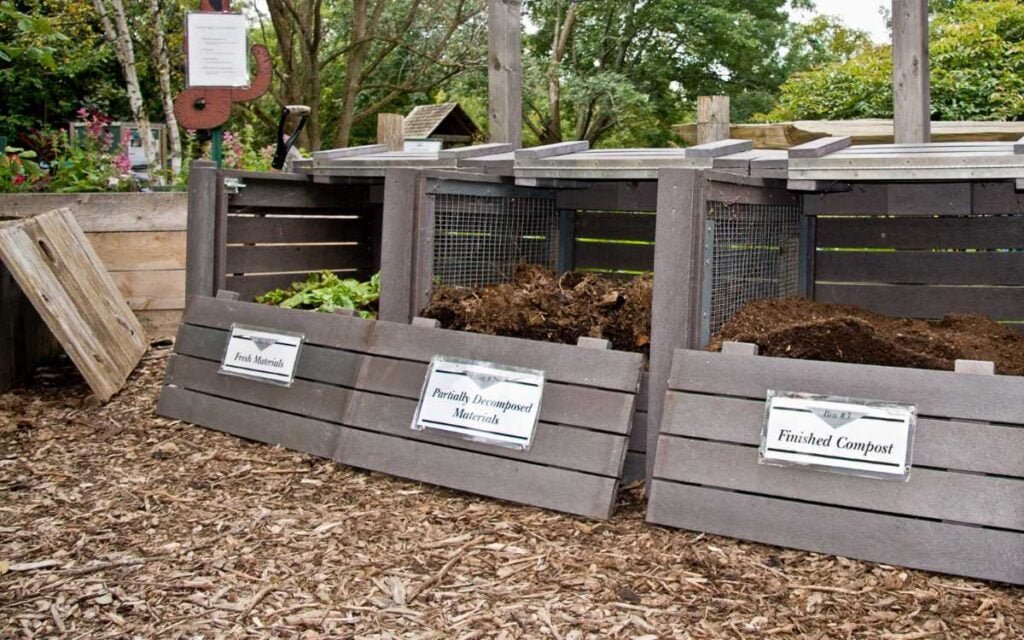
Yes, leather products can be composted in a home composting system, but it will take longer than other compostable materials to break down. This is because leather is a tough material that is made from animal hides.
There are a few things you can do to help leather compost more quickly:
Cut the leather into small pieces. This will increase the surface area of the leather and make it easier for the microbes in your compost bin to break it down.
Mix the leather with other compostable materials. This will help to create a more balanced compost mix and will also help to speed up the decomposition process.
Keep your compost bin moist and aerated. This will create an ideal environment for the microbes in your compost bin to thrive.
It is important to note that not all leather products are created equal. Some leather products may contain chemicals or dyes that are not good for your compost bin. If you are unsure whether or not a particular leather product is compostable, it is best to err on the side of caution and avoid composting it.
Are There Any Eco-Friendly Disposal Methods for Leather Products?

Yes, there are a number of eco-friendly disposal methods for leather products. Some of the most common methods include:
Composting: As mentioned above, leather products can be composted in a home composting system, but it will take longer than other compostable materials to break down. To help the leather compost more quickly, cut it into small pieces, mix it with other compostable materials, and keep your compost bin moist and aerated.
Donating: If your leather products are still in good condition, you can donate them to a local charity or thrift store. This will give the products a second life and help to reduce waste.
Recycling: Some communities have leather recycling programs. Check with your local recycling center to see if they accept leather products.
Upcycling: Upcycling means you take old things you don’t need anymore, like stuff you’d throw away, and instead of tossing them, you find ways to make them useful again. It’s like giving stuff a second chance instead of letting it go to waste.
So instead of buying new things, you use your creativity and skills to make something cool out of what you already have. It helps the environment by making less trash, and it’s fun to see what you can make. You can upcycle leather products by turning them into new items, such as belts, bags, or jewellery.
Bottom Line
In conclusion, leather is biodegradable by nature. However, its decomposition is influenced by the processes it undergoes and the environments it encounters. For us as consumers, it’s vital to grasp these details.
This knowledge helps us make smarter, more sustainable decisions. The world is changing fast, and so is the leather industry. Many producers now lean towards greener tanning and treatment methods.
This evolving trend not only shows the industry’s growing eco-awareness but also gives us more sustainable leather choices. By choosing and supporting environmentally-aware brands, we can find a harmonious blend of style, practicality, and environmental care.





